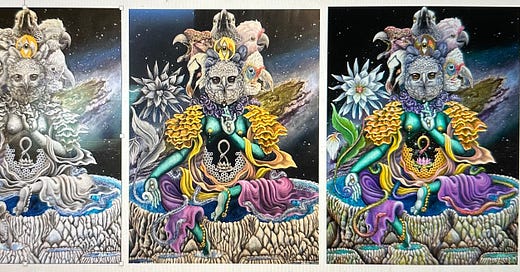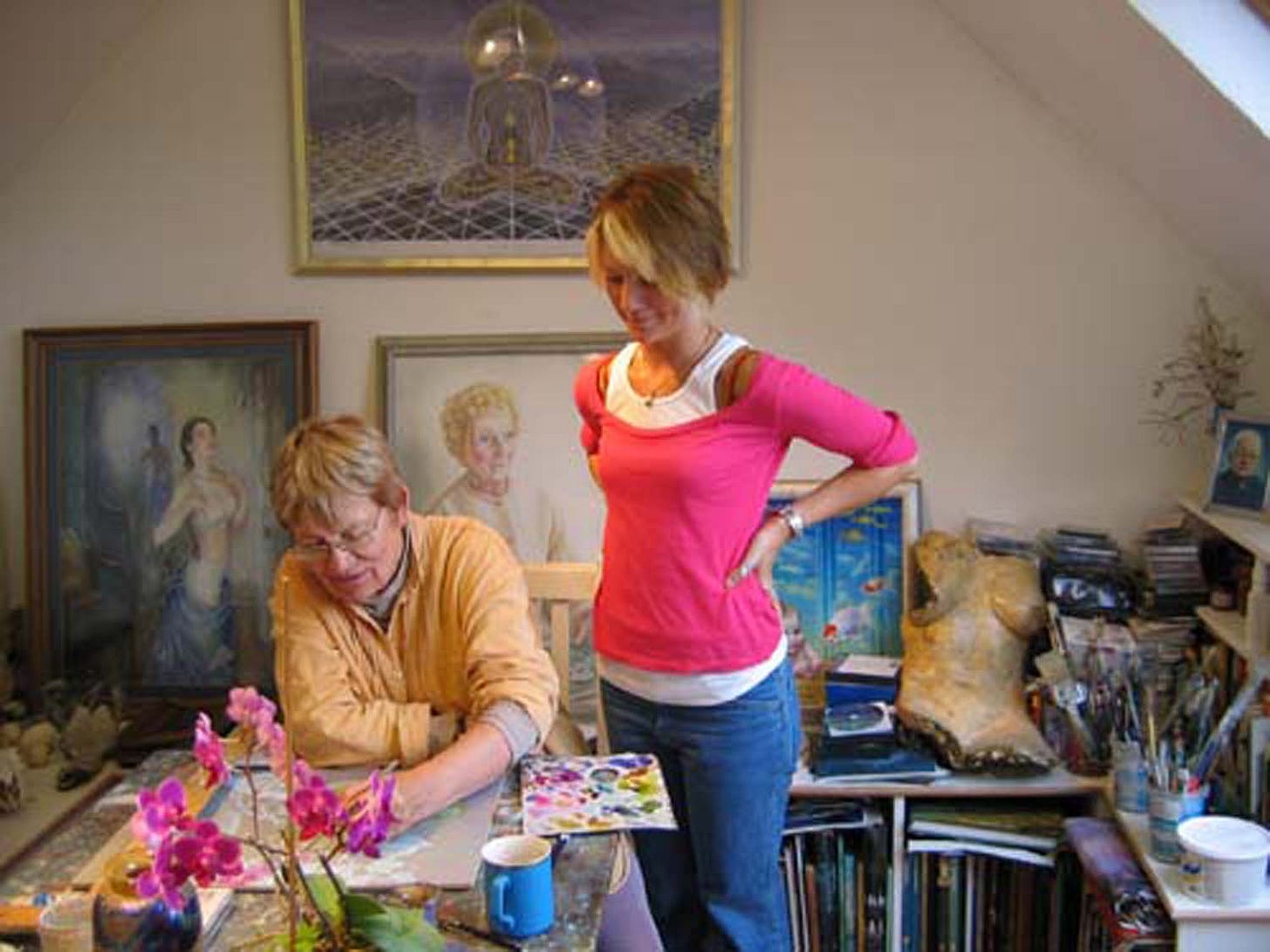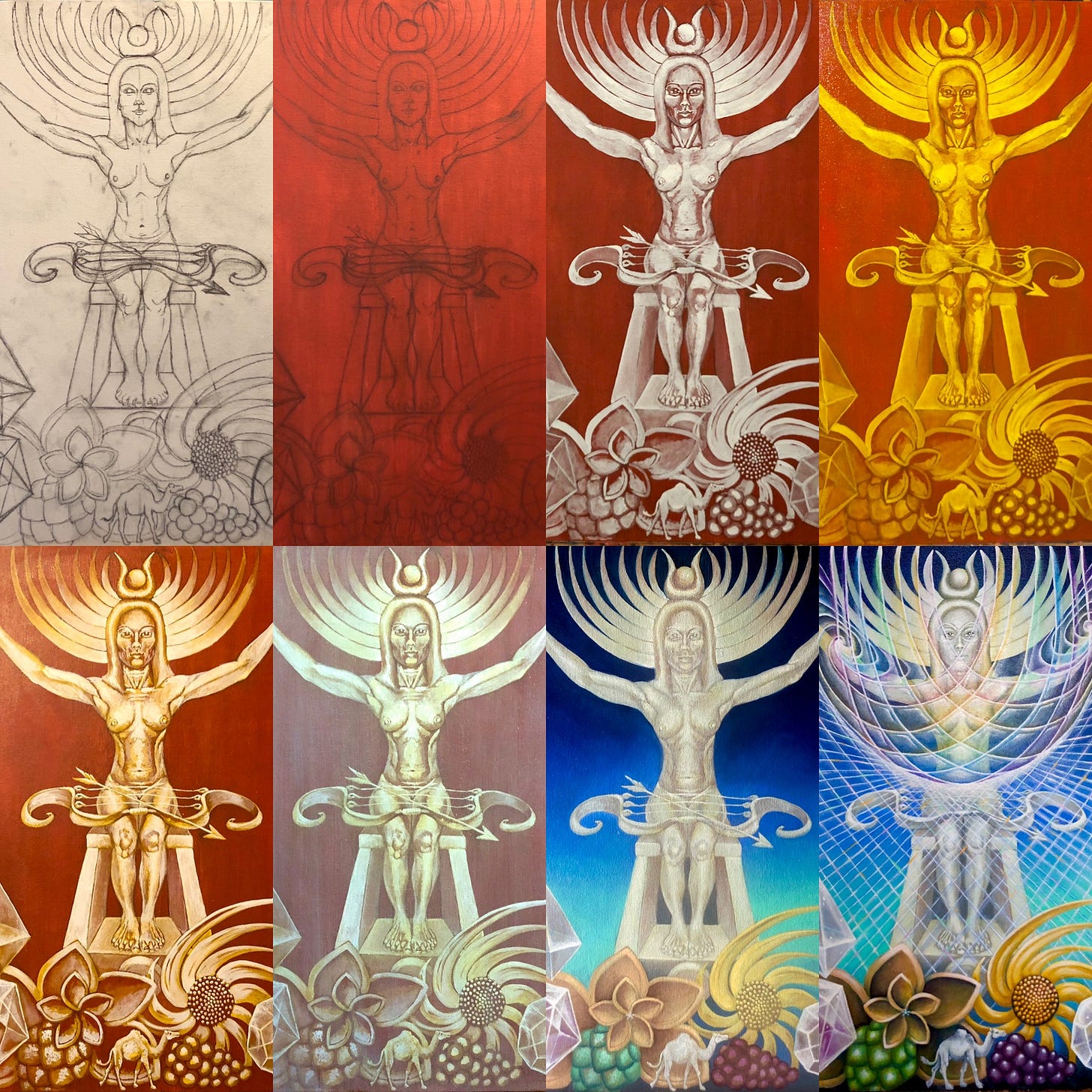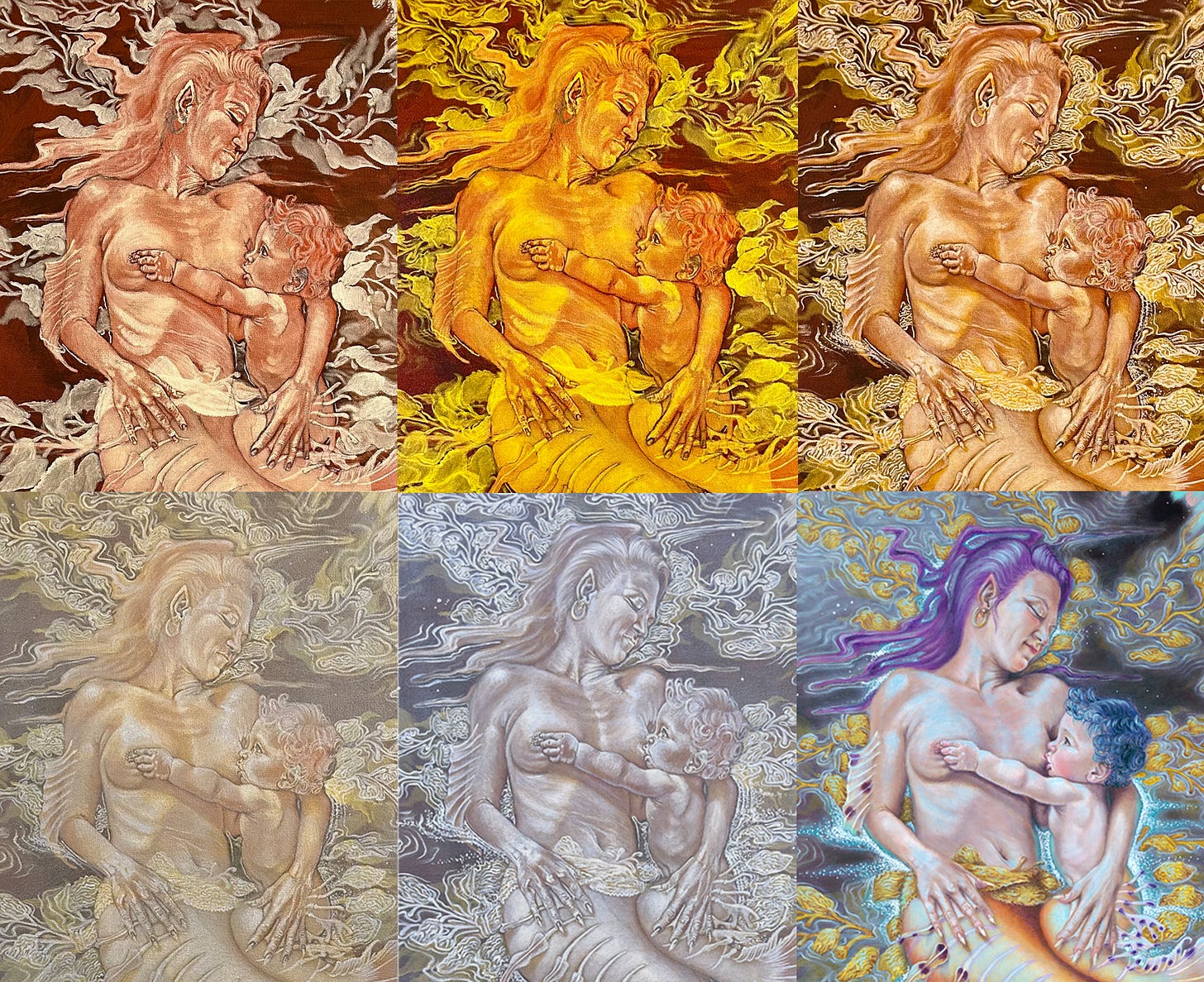If you’ve been around here for a little while, you know that I primarily paint in a technique called the Mische Technique. I learned the technique from the matriarch of contemporary Visionary Art, Brigid Marlin, back in 2005-2006.
Here, Baby Me is in Brigid’s studio in Berkhamsted outside of London as she instructs me on my very first Mische Technique painting ever. I took to the technique like a fish to water. It was exactly what I had been looking for - a way to learn to see.
This sounds rather odd for a technique that is primarily known for its use in the visionary art community, which prioritizes images from the imaginal, visionary, and psychedelic realms. But I have always gravitated towards what I like to call Imaginary realism, which heavily relies on images from the “real” to create visual stories from the more-than-real worlds.
The Mische Technique trains you to see with light. Because the image is made up of highlights, the shadows are formed through the absence of light, much like exactly how real shadows are created. The light, in this case, is white casein or egg tempera paint, that fleshes out the image through tonality (how intense the white color is).
As you can see above with The High Priestess contrasted with the very first image of Green Tara, there are several ways to do a Mische Technique painting. I personally do several ways and there are probably almost as many variations to this technique as there are people who practice it. But there is one that I prefer and one that I keep coming back to over and over with each painting, and that is the way Brigid taught me. I call it the Tricolor Mische Technique since she didn’t have a name for it. It’s how her teacher, Ernst Fuchs, taught her. The thing is, he went on to teach many many more students over the decades he taught and he evolved his technique quite a lot over those years. This method that I was taught and that I myself teach my students, not only preserves some early transmission of the technique but is an exquisite way of learning the mysteries and intricacies of the technique.
The Tricolor Mische Technique starts out with a pen drawing of your image on your canvas. Then, you paint a lovely red oxide over the whole thing and begin your first layer of white. You can see that in the detail of Merdonna and Child above on the top left. Then, you do a golden yellow glaze over the whole thing. I love using Indian Yellow for this. Then you’ve got another layer of the white egg tempera where you refine what you did before. It’s like a layer cake if the cake was shaped like a pyramid. Each layer of the white is less and also more precise than the one before it so you sculpturally build up your highlights. Once the white is done, you paint a pale blue glaze over the whole painting. Digital cameras cannot capture this color at all. It becomes an opalescent blue. Then, one more highly refined later of white on top of that, and then you are ready for color.
Amanda Sage, another one of Fuchs’ students, although much later than Brigid, says that the maestro could render his underpainting so perfectly that it only took one glaze of color to finish it. I am not entirely sure if that’s possible with the kind of paintings I am doing but I’ve set it up as a goal for myself. I usually can get to between 2-4 color glazes before I call a piece complete.
That’s the very basic gist of it. I’ve been creating videos for about a year now on my YouTube channel with a lot of free information about how to Mische. Several of you found your way here through that platform and I am so grateful you are here!
Here’s the first video of the series and it explains the layer cake idea in detail.
I have been teaching this technique since 2008 selectively. I’ve started taking on individual students this past year on Zoom and sometimes in person and I’ve been loving being along with them as they bring a painting to life from start to finish. I set up an easy intake process if this is something you would like to explore.
The intake process is really intended to be both an exploratory overview of the method as well as a time to investigate your goals and desires for the technique. I have it scheduled for an hour but we usually go over. Here we determine where you would like to go next in this customizable choose-your-own-adventure way of working. I often recommend that we begin a painting together and see it through to the end. It’s the best way to really get under the skin of the technique, but there are many other ways of working together. You can read more about the intake here if it’s interesting to you.
Speaking of working together, I’ve got Alligator Lizards this Saturday at The Alembic! If you are new and are wondering what on earth I’m referring to, it’s my monthly visionary/peak experience/dream/more than normal states of consciousness integration class. I did a post about a little while ago and you can read it HERE. If you are in the Bay area, I would love to see you and create together. There’s more info on the Eventbrite and details on location and signing up.








